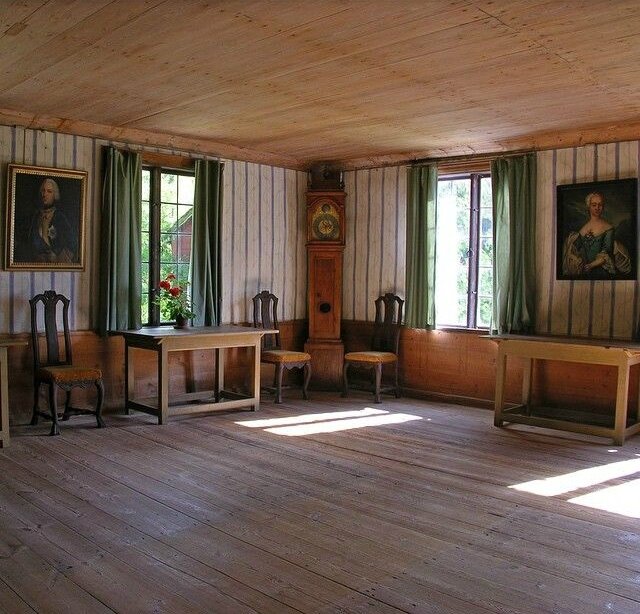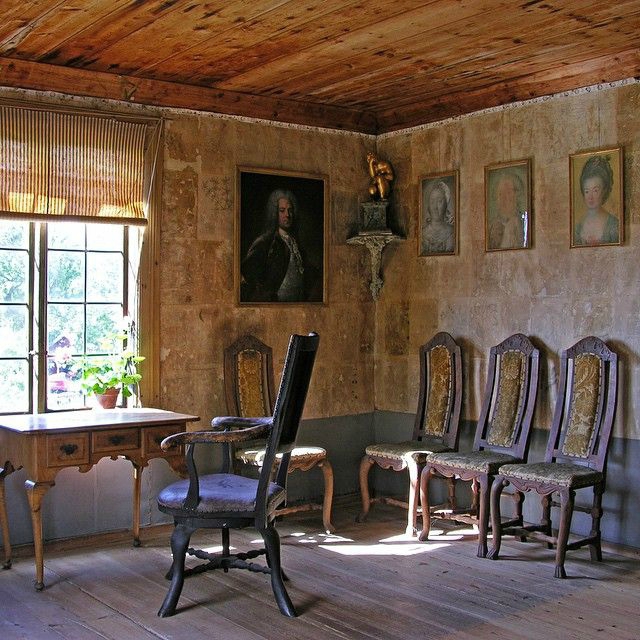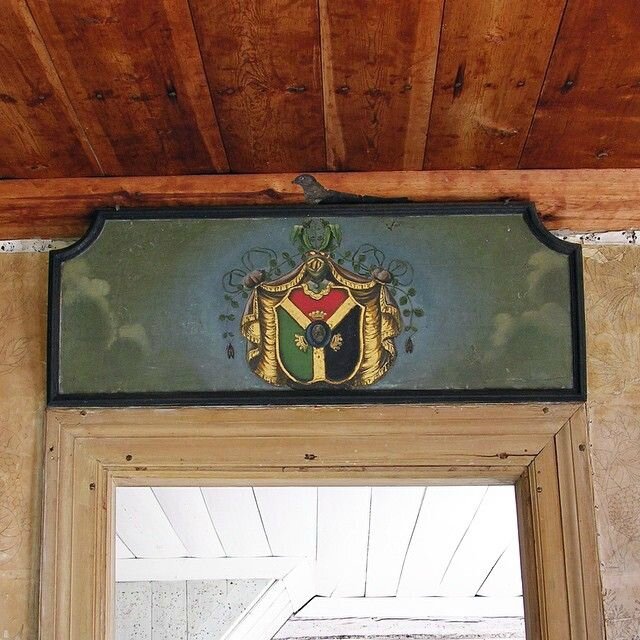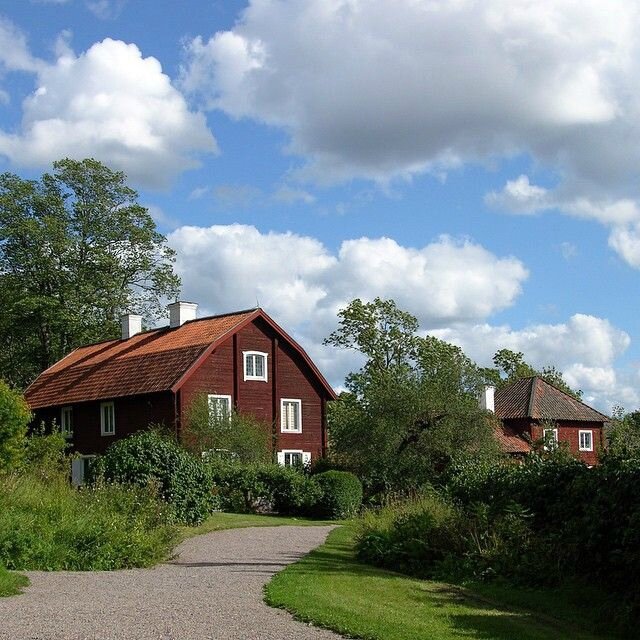Carl Linnaeus' summerhouse Hammarby.

Hammarby 15 kilometres in the countryside outside Uppsala was the summerhouse of the famous Swedish botanist Carl Linnaeus (1707-78) (he changed his name to von Linné after he was ennobled in 1757). He and his wife Sara bought the property in 1758 and they had a new house built here which was finished in 1762. The house is remarkably well preserved and open as a museum in the summer.

A portrait of the botanist Carl Linnaeus (Carl von Linné) painted in 1775 by Alexander Roslin when he was 68 years old. Several painters had portrayed him, but this is the portrait he liked the best. The portrait was exhibited at the Salon in Paris when it was finished. The original belongs to the Swedish Royal Academy of Science but a copy hangs at his beloved summerhouse Hammarby.

The Hall on the ground floor of Linnaeus' Hammarby was used as a dining room and the simple pinewood tables were brought out and covered with table cloths at meal times. The wall paper is a reprint after an original 18th century design.

A portrait of the little monkey Grinn by Gustaf Hesselius. The monkey and the painting were given to Carl Linnaeus by Queen Lovisa Ulrica. The monkey was too wild and naughty to be kept at court so it ended up amusing Linnaeus instead.

A green glazed tiled stove in the dining room at Linnaeus' Hammarby.

The upstairs anteroom in Carl Linnaeus summerhouse Hammarby. The wallpaper with a floral pattern printed in black on a yellow background is original from the 1760's. The portraits on either side of the window are of Carl Linnaeus and his wife Sarah. The portrait to the left is a copy of Alexander Roslin's famous portrait of Linnaeus.

Detail of the painted imitation wood panel from the 1760's in the anteroom at Hammarby.

Carl Linnaeus' study in his summerhouse Hammarby. The walls are covered with prints of American plants after the artist Charles Plumiers' work Plantarium Americanum published by Linnaeus' good friend Johannesburg Burmannus. Linnaeus was very pleased with the result but as the room has windows facing both south and west the prints are very faded now.

Carl Linnaeus' study in his summerhouse Hammarby. The portraits are of the of his daughters. To the right of the green tiled stove is a drawing of Sjupp, the first raccoon seen in Sweden. He was a gift to Linnaeus from King Adolph Fredric.

Above the door in the study is a panel painted with Carl Linnaeus' coat of arms. He was the son of a vicar and in 1757 King Adolph Fredric ennobled him and he changed his name to Carl von Linné. The King and Queen were very fond of him and he was obliged to spend time away from his beloved Hammarby to be a guest at the royal Court at Drottningholm Palace. Queen Loviasa Ulrica wanted him to bring his four daughters to the court but Linnaeus said no as he thought they would get ideas above their station and it would be damaging to their moral.

Carl Linnaeus' bedroom at Hammarby. The walls are covered with prints from Dionysis Ehrets Planta Selecta, 1750-73. To the left is a portrait of King Adolph Fredric and to the right of the monkey Grinn is a portrait of Linnaeus' great friend and benefactor Count Carl Gustaf Tessin.

The bedroom of Carl Linnaeus' daughters in his summerhouse Hammarby.

The kitchen at Linnaeus house Hammarby with it's typical period stove from the time the house was built in the 1760's.

The botanist Professor Carl Linnaeus (von Linné) bought the property as a summerhouse, but also as an investment in 1758. He acquired neighbouring farms during the following years and became a large landowner as he ended up owning 10 farms.

/https%3A%2F%2Fprofilepics.canalblog.com%2Fprofilepics%2F1%2F0%2F100183.jpg)
/https%3A%2F%2Fstorage.canalblog.com%2F03%2F02%2F119589%2F96711876_o.jpg)
/https%3A%2F%2Fstorage.canalblog.com%2F11%2F31%2F119589%2F94773502_o.jpg)
/https%3A%2F%2Fstorage.canalblog.com%2F20%2F83%2F119589%2F94772815_o.jpg)
/https%3A%2F%2Fstorage.canalblog.com%2F26%2F72%2F119589%2F75604929_o.jpg)
/https%3A%2F%2Fstorage.canalblog.com%2F59%2F60%2F119589%2F26458628_o.jpg)


/http%3A%2F%2Fstorage.canalblog.com%2F68%2F34%2F119589%2F127179284_o.jpg)
/http%3A%2F%2Fstorage.canalblog.com%2F09%2F07%2F119589%2F92138622_o.jpg)
/image%2F1371349%2F20240423%2Fob_b2fe42_telechargement-9.jpg)
/image%2F1371349%2F20240423%2Fob_af8bb4_telechargement-6.jpg)